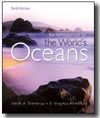
The Structure and Motion of the Atmosphere |  |
Internet Exerciseshttp://www.usatoday.com/weather/wwind0.htm
At the USA Today Weather Page, read "Jet Stream Formation." Click on "The Polar Jet." How does a polar front determine jet stream position? Go to "Cold Front." Why is severe weather often associated with an advancing cold front?http://www.nodc.noaa.gov/dsdt/cwtg/
Select a region, e.g. the North Atlantic Coast. Compare the temperature of the water over several months. What trends do you see? Click on a totally different area. What trends do you see in this region? Can you correlate the region, water temperatures, and ambient climatic conditions within that area? How will ocean temperatures in these regions influence regional atmospheric temperatures?http://www.pmel.noaa.gov/toga-tao/el-nino/home.html
Under the heading, "The Basics," click on "What Is El Niño." How are El Niño events forecast and detected? Read "Recognizing El Niño." Enlarge the color charts of Sea Surface Temperature (SST) and SST Anomalies by clicking on the images. Examine the SST chart (left); what pattern can you find between 100°W and 160°W? Look at the SST Anomalies chart (right); is there a regular pattern in this chart? Locate the warmest water and the coldest water on the SST Anomalies chart; what air/sea event coincides with each? |
|
|